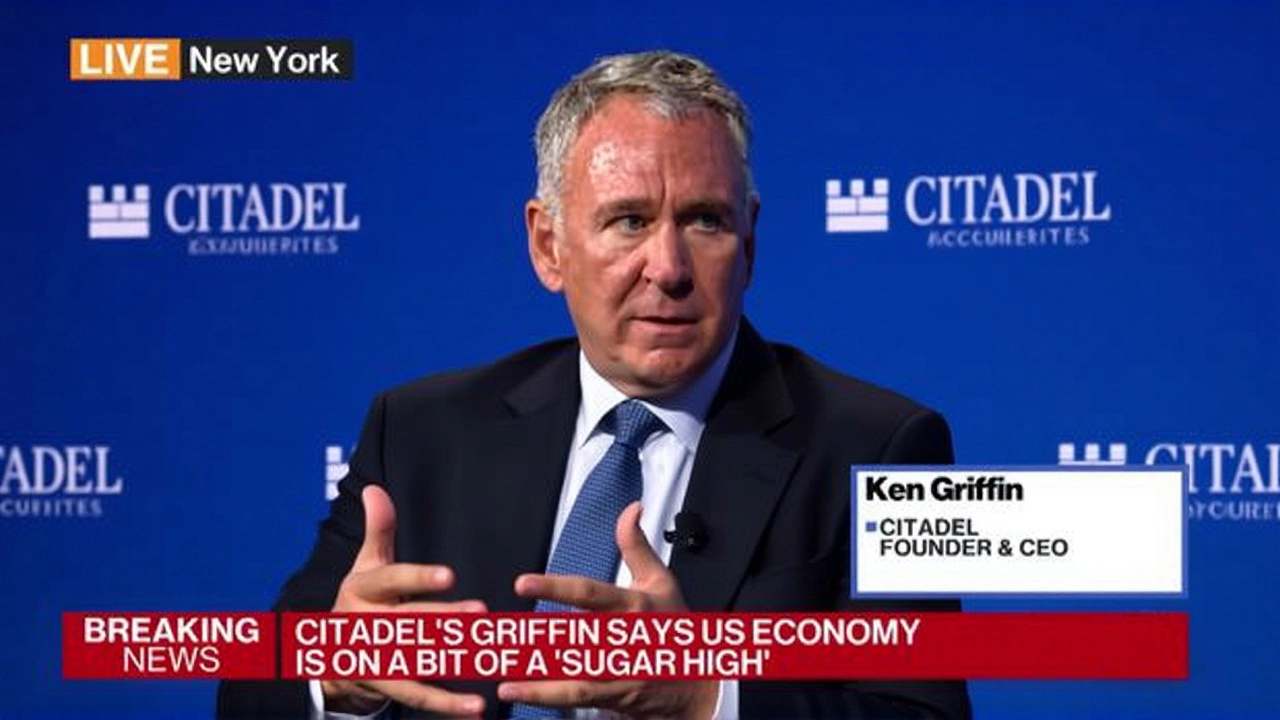When Ken Griffin, founder and CEO of Citadel LLC told investors that a rapid flight to gold was “concerning,” markets sat up and took notice. The comments, delivered during an interview in early October 2024, came at a time when the U.S. dollar’s dominance is being questioned by a growing cohort of hedge funds and private‑credit firms. Griffin’s remarks were made from Miami’s Brickell district, where his firm is also breaking ground on a skyscraper originally budgeted at $1 billion but now projected to cost roughly $2.5 billion.
Background: Gold’s Safe‑Haven Appeal
Gold has long been viewed as a hedge against inflation and currency weakness. Over the past year, the metal has surged more than 15%, outpacing the S&P 500’s 8% gain. The rally is tied to two main forces: tightening U.S. monetary policy that squeezes liquidity, and geopolitical jitters from the Russia‑Ukraine conflict that keep investors wary of fiat currencies.
But Griffin’s alarm wasn’t about gold’s price climb; it was about the speed and volume of capital moving into the metal. “If you see a sudden, massive allocation shift from cash to gold, that tells you something is wrong with the underlying confidence in the dollar,” he said, echoing concerns that have been bubbling in Treasury markets since the Fed’s last rate hike in July 2024.
Griffin’s Remarks and the Private Credit Concerns
While the gold discussion grabbed headlines, Griffin also used the platform to shine a light on the private‑credit sector—a market that has ballooned to over $2 trillion in assets under management. He noted that “every single private credit firm delivers almost exactly the same term sheet,” with price spreads within 25 basis points. To illustrate, he pointed to a recent deal where seven firms submitted nearly identical offers, leaving borrowers with little leverage for better terms.
"It’s really quite profound," Griffin added. "What real distinction underwriting is happening when you’ve got seven people all bidding on a deal and they’re all within 25 basis points of one another? That to me is shocking."
His critique suggests that the market’s lack of differentiation could amplify risk, especially if a broader flight to safety—like the gold rush he described—drains liquidity from the private‑credit pool.
The Brickell Tower: A Glimpse into Citadel’s Real‑Estate Ambitions
Griffin also talked about a massive construction project in Miami’s Brickell district. Initially pegged at $1 billion, the skyscraper’s cost has swelled to an estimated $2.5 billion due to post‑pandemic construction inflation and supply‑chain bottlenecks. Construction is slated to begin in mid‑to‑late 2026, and the tower will house a mixed‑use development featuring office space, luxury residences, and a data‑center hub—an integral part of Citadel’s diversification strategy.
- Location: Brickell, Miami
- Original budget: $1 billion
- Revised estimate: $2.5 billion
- Projected start: 2026
- Purpose: diversify into real‑estate and tech infrastructure
Industry observers say the project signals that even hedge‑fund titans are hedging against market volatility by locking in tangible assets—an echo of the same safety‑seeking behavior Griffin warned about with gold.
Reactions from Wall Street and Market Analysts
Following the interview, analysts at JPMorgan and Goldman Sachs echoed Griffin’s caution. “A rapid reallocation into gold could compress equity valuations further,” said Tara Liu, senior strategist at Goldman. Meanwhile, private‑credit managers at Blackstone and Ares expressed confidence that their underwriting standards remain robust, but acknowledged the need for greater product differentiation.
On the currency front, the Federal Reserve’s recent minutes indicated no immediate plan to further tighten policy, yet the dollar index slipped 0.6% after Griffin’s comments, reinforcing the notion that sentiment can move markets as powerfully as data.

What This Means for Investors
For retail investors, Griffin’s warning offers two takeaways. First, a sudden surge into gold isn’t necessarily a bullish signal; it may be a defensive maneuver that foreshadows tighter liquidity. Second, private‑credit exposure—often accessed via alternative‑investment funds—should be scrutinized for underwriting rigor and pricing transparency.
Financial planner James Ortega suggests a balanced approach: "Maintain a modest allocation to gold—perhaps 5‑10% of your portfolio—but also keep an eye on the quality of any private‑credit or real‑estate holdings you own. Diversification is still key, but diversification with a view on risk concentration is what matters now."
Looking Ahead
Griffin’s interview is likely to be revisited as the year unfolds. If the dollar continues to weaken, gold could see further inflows, potentially driving up storage costs and prompting central banks to adjust reserves. On the private‑credit side, expect regulatory bodies to examine the sector’s pricing uniformity, especially if a market shock forces widespread defaults.
Meanwhile, the Brickell tower will remain a barometer of how quickly financial firms can pivot from paper assets to brick‑and‑mortar. Its groundbreaking ceremony, slated for early 2025, will likely feature the same mix of optimism and caution that marked Griffin’s remarks.
Frequently Asked Questions
Why is a rush to gold considered concerning by Ken Griffin?
Griffin argues that a sudden, massive shift into gold signals a loss of confidence in the U.S. dollar and could tighten liquidity across markets, raising borrowing costs and unsettling the broader financial system.
What does Griffin mean when he says private‑credit term sheets are too similar?
He observed that multiple firms offered nearly identical pricing—within 25 basis points—on the same deal, suggesting little real competition or underwriting differentiation, which could mask hidden risks.
How will the cost inflation of the Brickell tower affect Citadel’s finances?
The jump from $1 billion to $2.5 billion means Citadel must allocate more capital to real‑estate, potentially reducing funds available for other investments. However, the asset also diversifies its portfolio, providing a hedge against market volatility.
What should individual investors do in response to Griffin’s warnings?
Experts suggest keeping a modest allocation to gold—around 5‑10% of a portfolio—while reviewing exposure to private‑credit funds for underwriting quality and ensuring overall diversification remains intact.
When is construction expected to start on the Brickell tower?
Griffin indicated that groundbreaking is likely to occur in mid‑to‑late 2026, after final financing and permitting steps are completed.
